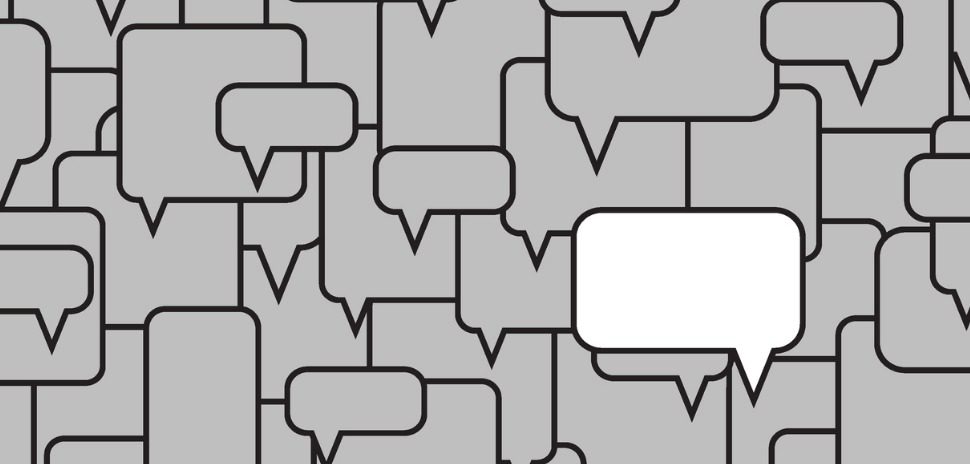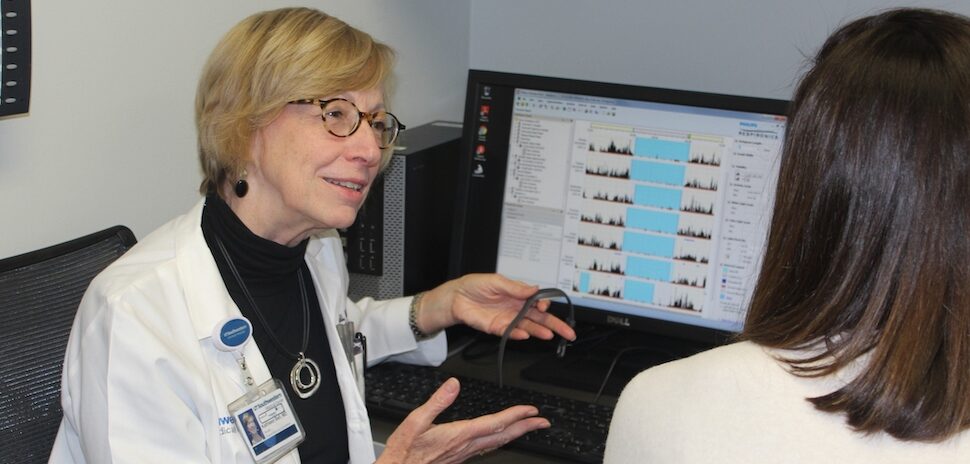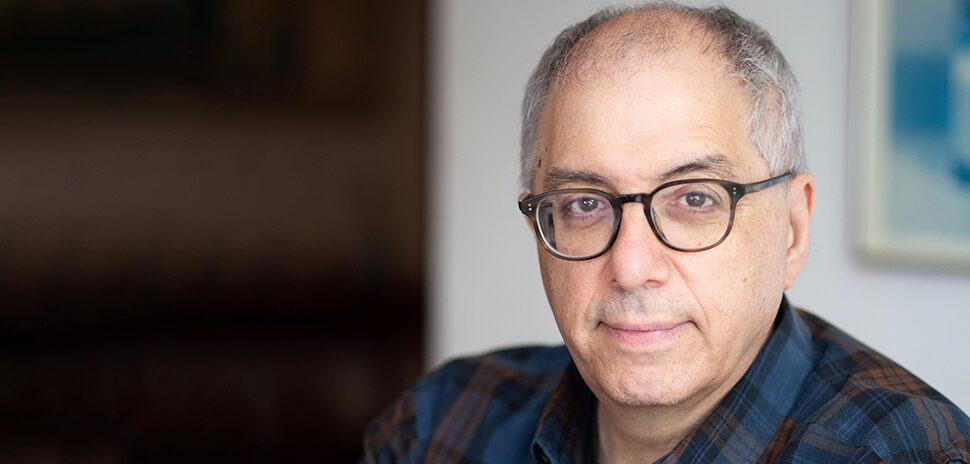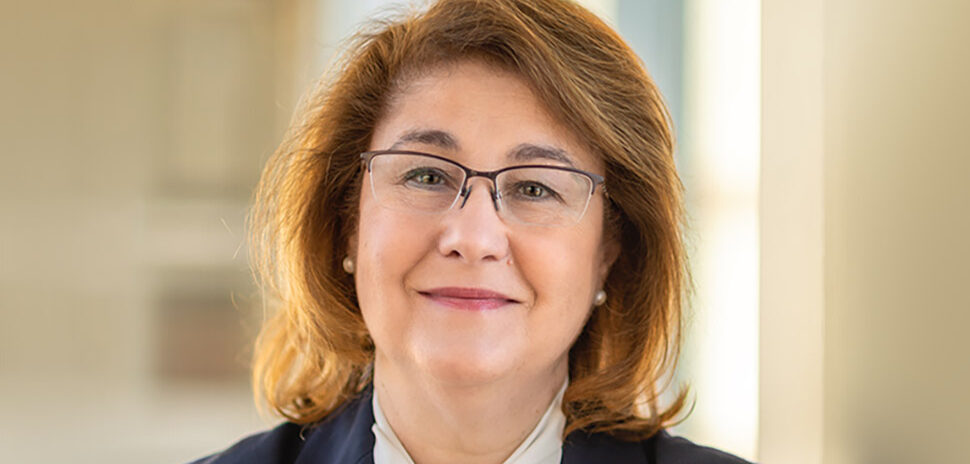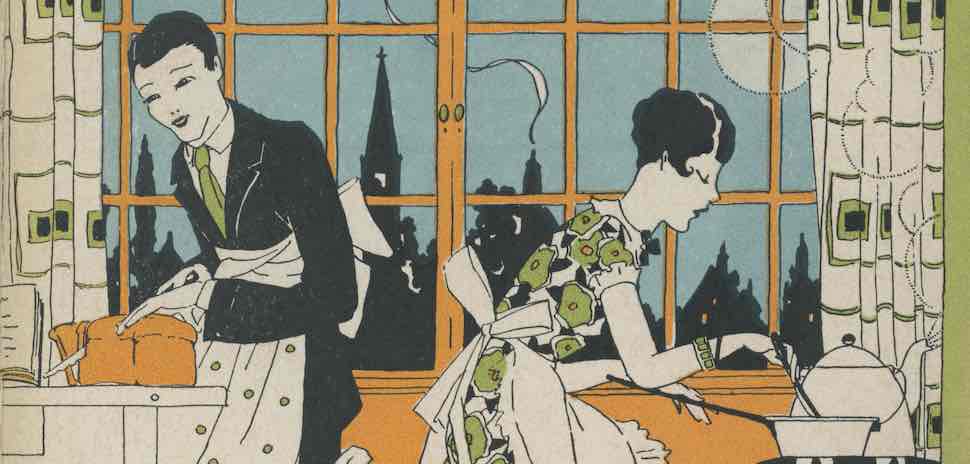
Part of a cover illustration from "One Whole Year of Sunday Supper Suggestions," by M.V. Doten. Published in 1927 by Rust Craft Publishing Co. [Image: SMU DeGolyer Library]
“Cookbooks offer a way to rethink the history of the last 200 years.”
Christina Jensen
Head of Public Services
SMU’s DeGolyer Library
.…on the exhibit, “The Joy of Cooking: Two Centuries of Cookbooks at the DeGolyer Library.”
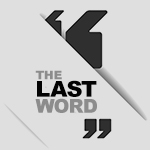 Food trends come and go. But if you try a recipe from 1816, you might find something old could be very tasty today.
Food trends come and go. But if you try a recipe from 1816, you might find something old could be very tasty today.
That could be one delicious outcome of a current exhibit at SMU’s DeGolyer Library: “The Joy of Cooking: Two Centuries of Cookbooks at the DeGolyer Library.”
Neatly timed to be on display during the holiday season, the exhibit runs through December 22 and features 206 books from DeGolyer’s massive, 6,000-cookbook collection. The books were acquired during the research library’s decades of collecting items related to Western Americana, transportation, women’s history, and business history.
“Cookbooks are much more than compilations of recipes,” Jensen, who curated the exhibit, said in a statement. “They offer a timeline of economic, technology, family, and social history.”
The oldest of all cookbooks in the exhibit is a leather-bound, handwritten recipe book written in Spanish by Dona Maria Josefa de La Luz Tapia in 1816.
“The Holiday Drink Book”—one of Neiman-Marcus executive Stanley Marcus’ cocktail recipe books—features insights like, “When thou dost drink beware the toast, for therein lies the danger most!”
Also, you can learn more than just how to make dried peaches, calves’ foot jelly, and “poor man’s cake” when you peruse the exhibit. Lucretia Eleanor Thomas’ handwritten cookbook written from 1850 to 1870 also offers housekeeping tips for making things like furniture polish and marble-cleaning paste from scratch.
The exhibit is open from 8:30 a.m. to 5 p.m., Monday-Friday and 10:00 a.m. to 6:00 p.m. Saturday-Sunday (excluding home football game days and holidays) through December 22.
For more of who said what about all things North Texas, check out Every Last Word.

Get on the list.
Dallas Innovates, every day.
Sign up to keep your eye on what’s new and next in Dallas-Fort Worth, every day.
R E A D N E X T
-
Read “who said what” in our roundup of quotes about all things North Texas, including ENO8's Jeff Francis; MyndVR's Chris Brickler and Ted Werth; Axxess' John Olajide; the Urban Land Institute's Ron Pressman; Dallas Mayor Eric Johnson; the Mavs Foundation's Katie Edwards; UT Arlington's Yi Hong; HomeUSA.com's Ben Caballero; ParkHub's George Baker Sr.; and more.
-
The eighth annual HackDFW, powered by Say Yes to Dallas and presented by Google, connected hundreds of aspiring technologists to several Fortune 100 companies. It was a unique 48-hour marathon that challenged more than 550 people from 80 universities. Tech teams created ways to innovatively tackle waste management, climate change, better understand decisions from the Supreme Court, and much more.
-
As many North Texans try to move on from the pandemic, Dr. Bell is focused on the "tens of millions of patients" who've developed long-haul COVID—and who are experiencing life-altering symptoms long after their COVID-19 infection cleared.
-
Levy has been writing about technology for more than 30 years. A founding writer at Wired, he's widely considered to be the premier tech journalist in the U.S. He’s covered the digital revolution since the early 1980s, reporting every major trend and profiling its key figures. Today, as a keynote speaker on the closing day of Dallas Startup Week, he took stock of how we got here—and what's next.
-
Konsta-Gdoutos is exploring a way to turn one of the world's biggest polluters—concrete, which accounts for at least 8% of global energy-related CO2 emissions—into a source of clean, renewable energy. “We will pioneer TE-CO2NCRETE, a thermoelectric carbon-neutral concrete, that will exhibit a high carbon dioxide uptake potential and storage capacity,” Konsta-Gdoutos said in a statement. “Engineering the nanostructure of concrete also will allow the material to capture thermal energy from the surroundings and convert it into usable electrical energy, leading to the development of a novel technology for renewable electricity and higher efficiency power source.”
 Food trends come and go. But if you try a recipe from 1816, you might find something old could be very tasty today.
Food trends come and go. But if you try a recipe from 1816, you might find something old could be very tasty today.![]()











